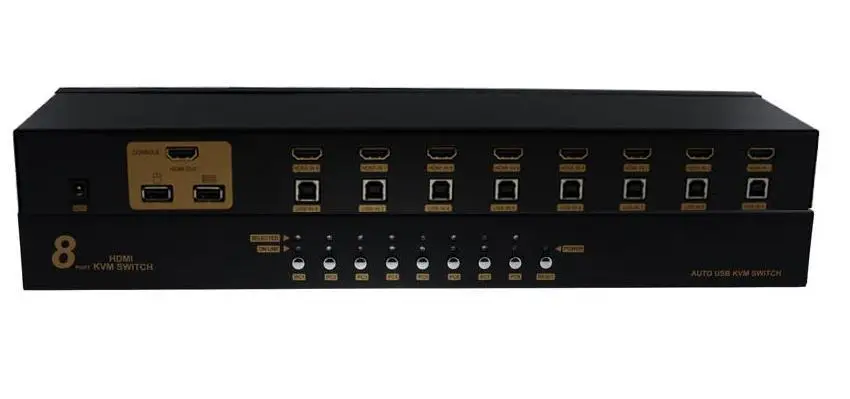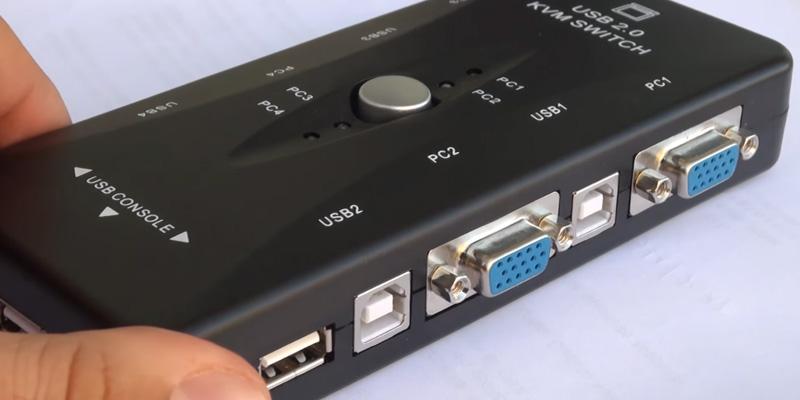Best Kvm (keyboard Video Mouse Switch For Mac
We spent 41 hours on research, videography, and editing, to review the top selections for this wiki. If you're trying to scale down your data center's hardware, maximize your desktop space, or save on business operating costs, one of these KVM switches is just what you need. Depending on the model, they support either HDMI or DVI connections, while giving you the freedom to seamlessly and simultaneously operate multiple computer systems using a single mouse, keyboard, and monitor. When users buy our independently chosen editorial picks, we may earn commissions to support our work. We spent 41 hours on research, videography, and editing, to review the top selections for this wiki.
If you're trying to scale down your data center's hardware, maximize your desktop space, or save on business operating costs, one of these KVM switches is just what you need. Depending on the model, they support either HDMI or DVI connections, while giving you the freedom to seamlessly and simultaneously operate multiple computer systems using a single mouse, keyboard, and monitor. When users buy our independently chosen editorial picks, we may earn commissions to support our work. The majority of consumers in today's technological world are familiar with a single computer setup. A person using a desktop computer, for example, has a (CPU) tower that houses the major internal components of their system, a keyboard, mouse, and a video monitor to complete their work. The same can be said for the laptop user. Everything needed to complete tasks on a laptop is in one place with fully-integrated processing power and connections for peripherals.

YouTube — Switching a USB display, keyboard, and mouse between a Mac and a PC (USB KVM) Plugable USB 2.0 Switch Want to share USB devices between 2 computers with the press of a button?
By contrast, a graphic design artist might require the ability to work seamlessly across two different operating systems with the ability to control them using a single workstation. The KVM switch can make this possible. KVM is an acronym for keyboard, video, and mouse. The KVM switch is a piece of hardware that allows for the toggled control of multiple computer CPUs or from a single keyboard, mouse, and video monitor using either a rotary dial or several independent buttons on the switch itself. Think of the KVM switch as a centralized communication hub (or the parent device) that can be used to take control over other machines and servers (its children devices) without forcing the user to get up, go over to the machines, and control them independently using separate keyboards and mice. A majority of KVM switches can control between two and eight computers at a time.
- The wireless base is plugged into one of two USB input ports on the KVM switch ( one for wired keyboard, one for wired mouse, both worked for me ), and the included KVM cables are plugged in to VGA/USB on the PC's.
- You can get a wireless keyboard/mouse with a USB dongle and plug that into the KVM. Then the KVM will handle the switching of the Keyboard, Video, and Mouse (KVM). Wireless won't be affected at all.
Computers can be connected to a KVM switch in a variety of ways. The most popular connection method is through the use of a specialized KVM cable that combines all of the keyboard, video, and mouse cables into a single extension cable that runs to each machine. This connection method reduces the number of cables required. Other switches may have separate built-in connectors for each machine's keyboard, video, and mouse cables. KVM switches are either active or passive. Passive switches are typically hardwired internally between their input and output ports.
Computers connected to a passive switch are selected manually using a rotary knob on the switch itself. Active switches are more common and they retain the actions performed by the devices (keyboards and mice) connected to them. Active switches are either powered by the connected computers' keyboard cables or they may have their own separate power supplies.
The KVM switch offers many benefits. Firstly, the CPUs (or servers) connected to the device are not required to have the same amount of memory or processing power between them. In fact, they don't even have to be from the same manufacturer.
The device significantly improves work productivity by decreasing the amount of time required of a user to switch between computers manually. The switch also reduces both energy and hardware costs, given that a worker no longer has to depend on the use of multiple video monitors (or additional peripherals) to complete their work from different workstations. This convenience comes in particularly handy when space is limited, when various tasks need to be completed quickly, and in situations where the user is responsible for controlling many machines at once. Ditch The Hitch And Get A Switch Because the KVM switch can be applied to many different circumstances and job profiles, one must really take their time to research and determine the type of switch that works best for their individual needs. Extender cables for KVM switches can be several hundred feet long, which can help in situations where your server room might be down the hall.
If you're a graphic designer or your job requires you to switch between different at the push of a button, then a switch with the capability to interface with both Mac and Windows machines will be the way to go. The good news is that many switches already do this as part of their basic functionality.
Consider the number of machines you'll need to connect to your KVM switch. If you are a telecommuter and plan to manage both your work and home machines but no others, then you won't need the fanciest or most expensive device with extra connection ports. By contrast, if you work as a network administrator with a responsibility for many machines and servers, then you'll want to consider a more robust switch with push-button controls and several available ports. You'll also need to make a determination of the cable system. If you anticipate a significant amount of distance between your switch and the connected hardware, then definitely spring for a device that consolidates those cables as much as possible. Extender cables for KVM switches can be several hundred feet long, which can help in situations where your server room might be down the hall.
Wireless Keyboard With Kvm Switch

A Brief History Of KVM Switches The KVM switch has a history that dates back to the early 1980's, which marked the beginning of the growth of the computer industry in general and the adoption of in 1985. Before the mouse became common, and an important part of server switching applications, the original term for the device was a keyboard video switch (or KVS). Server rooms and data centers were faced with the major problem of maintaining huge numbers of keyboards, mice, and video monitors. Back in the 1980's, there was an additional problem caused by all this equipment taking up excessive amounts of server rack space, while forcing computer technicians to physically walk to the servers that needed attention.
Kvm Switch Keystrokes To Switch
The very first switches were rudimentary in design and featured push-button interfaces. Remigius Shatas, founder of the Cybex Computer Products Corporation (which manufactured peripheral switches), expanded the functionality of the KVS to include the mouse by 1995, thus bringing about the modern KVM solution still used today. Around the same time, the (USB) would also become the industry standard for connecting the majority of computer peripherals. Since the mid-1990's, single-user KVM switches have evolved to include intelligent, on-screen for controlling multiple servers at the same time.
Used Kvm Switch
The most cutting-edge use for KVM switches today is via remote access over an internet browser. Thanks for reading the fine print. About the Wiki: We don't accept sponsorships, free goods, samples, promotional products, or other benefits from any of the product brands featured on this page, except in cases where those brands are manufactured by the retailer to which we are linking. For our full ranking methodology, please read about us, linked below. The Wiki is a participant in associate programs from Amazon, Walmart, Ebay, Target, and others, and may earn advertising fees when you use our links to these websites. These fees will not increase your purchase price, which will be the same as any direct visitor to the merchant’s website.
If you believe that your product should be included in this review, you may contact us, but we cannot guarantee a response, even if you send us flowers.